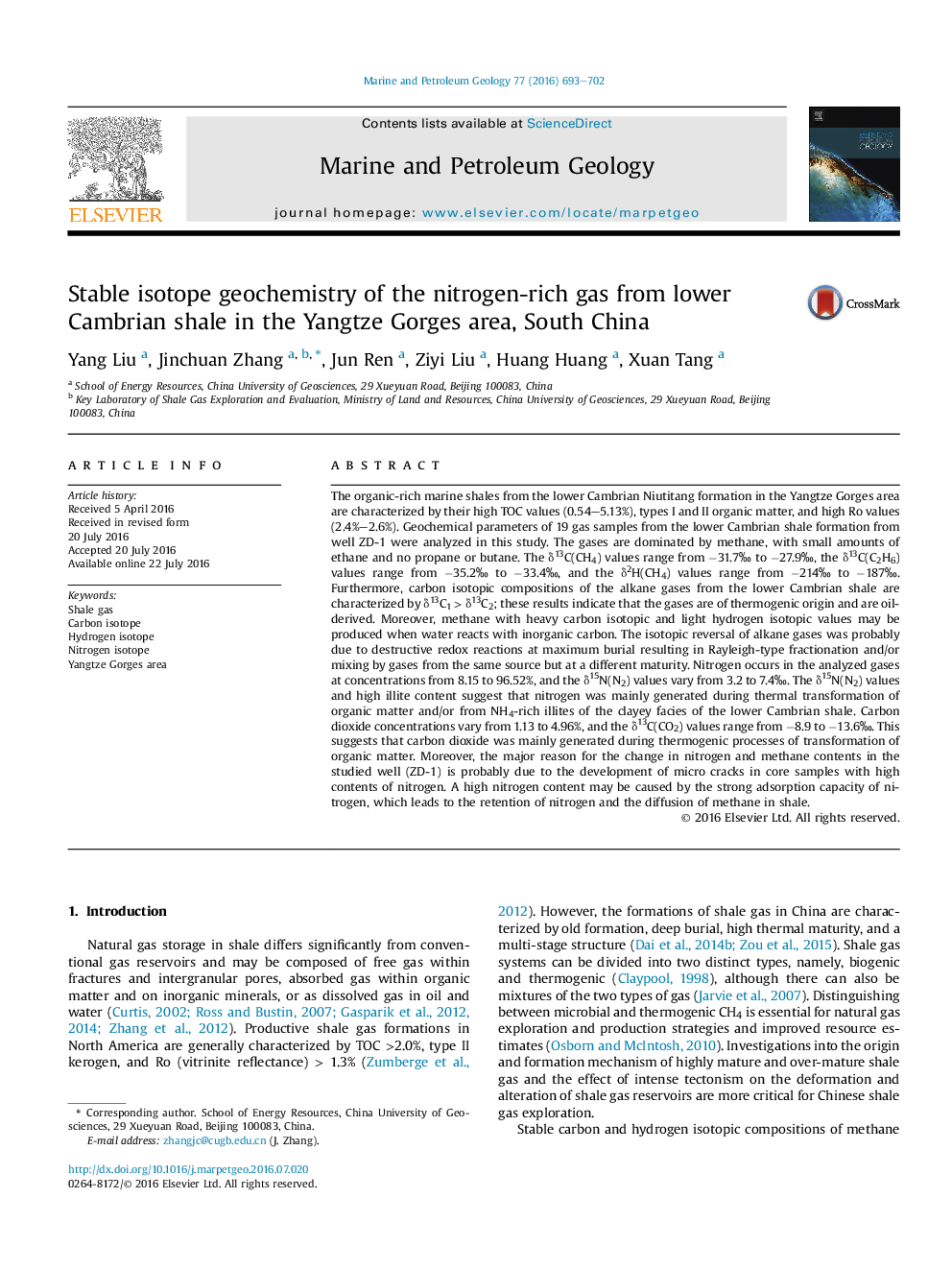| کد مقاله | کد نشریه | سال انتشار | مقاله انگلیسی | نسخه تمام متن |
|---|---|---|---|---|
| 6434601 | 1637150 | 2016 | 10 صفحه PDF | دانلود رایگان |

- Gaseous hydrocarbons are thermogenic origin and reveal inversed trend of 13C.
- CO2 and N2 were mainly generated from thermal transformation of organic matter.
- N2 contains component from thermal destruction of NH4-rich illites.
- Possible reasons of the high nitrogen content were presented.
The organic-rich marine shales from the lower Cambrian Niutitang formation in the Yangtze Gorges area are characterized by their high TOC values (0.54-5.13%), types I and II organic matter, and high Ro values (2.4%-2.6%). Geochemical parameters of 19 gas samples from the lower Cambrian shale formation from well ZD-1 were analyzed in this study. The gases are dominated by methane, with small amounts of ethane and no propane or butane. The δ13C(CH4) values range from â31.7â° to â27.9â°, the δ13C(C2H6) values range from â35.2â° to â33.4â°, and the δ2H(CH4) values range from â214â° to â187â°. Furthermore, carbon isotopic compositions of the alkane gases from the lower Cambrian shale are characterized by δ13C1 > δ13C2; these results indicate that the gases are of thermogenic origin and are oil-derived. Moreover, methane with heavy carbon isotopic and light hydrogen isotopic values may be produced when water reacts with inorganic carbon. The isotopic reversal of alkane gases was probably due to destructive redox reactions at maximum burial resulting in Rayleigh-type fractionation and/or mixing by gases from the same source but at a different maturity. Nitrogen occurs in the analyzed gases at concentrations from 8.15 to 96.52%, and the δ15N(N2) values vary from 3.2 to 7.4â°. The δ15N(N2) values and high illite content suggest that nitrogen was mainly generated during thermal transformation of organic matter and/or from NH4-rich illites of the clayey facies of the lower Cambrian shale. Carbon dioxide concentrations vary from 1.13 to 4.96%, and the δ13C(CO2) values range from â8.9 to â13.6â°. This suggests that carbon dioxide was mainly generated during thermogenic processes of transformation of organic matter. Moreover, the major reason for the change in nitrogen and methane contents in the studied well (ZD-1) is probably due to the development of micro cracks in core samples with high contents of nitrogen. A high nitrogen content may be caused by the strong adsorption capacity of nitrogen, which leads to the retention of nitrogen and the diffusion of methane in shale.
Journal: Marine and Petroleum Geology - Volume 77, November 2016, Pages 693-702